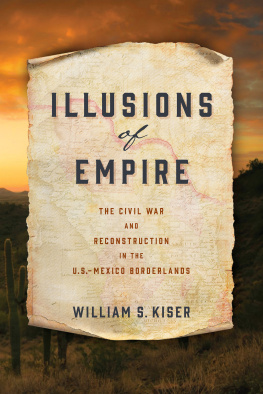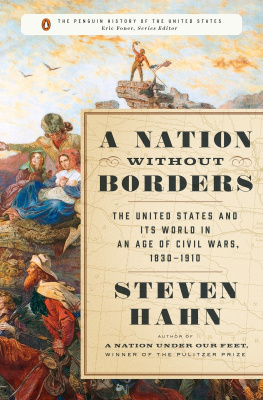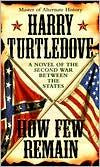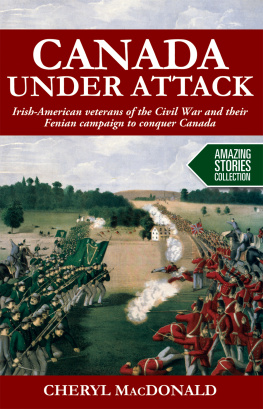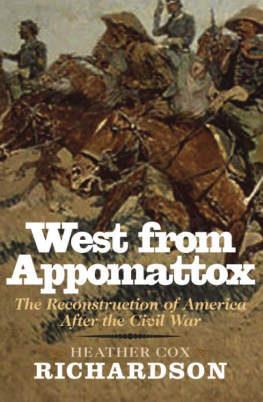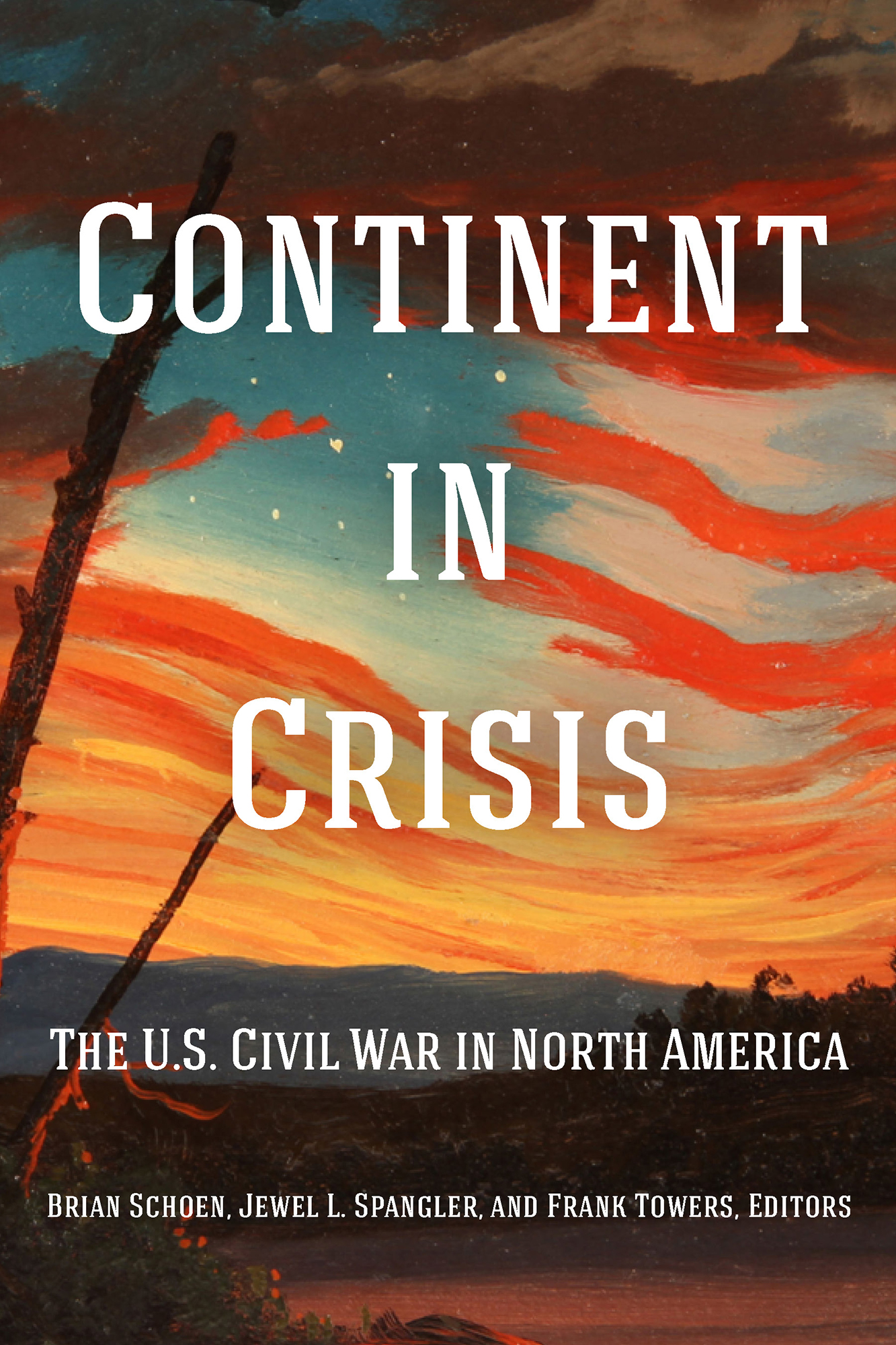Contents
Guide
List of Figures
Pagebreaks of the Print Version
RECONSTRUCTING AMERICA
Andrew L. Slap, series editor
Continent in Crisis
The U.S. Civil War in North America
Brian Schoen, Jewel L. Spangler, and Frank Towers, Editors
FORDHAM UNIVERSITY PRESS
NEW YORK 2023
Copyright 2023 Fordham University Press
All rights reserved. No part of this publication may be reproduced, stored in a retrieval system, or transmitted in any form or by any meanselectronic, mechanical, photocopy, recording, or any otherexcept for brief quotations in printed reviews, without the prior permission of the publisher.
Fordham University Press has no responsibility for the persistence or accuracy of URLs for external or third-party Internet websites referred to in this publication and does not guarantee that any content on such websites is, or will remain, accurate or appropriate.
Fordham University Press also publishes its books in a variety of electronic formats. Some content that appears in print may not be available in electronic books.
Visit us online at www.fordhampress.com.
Library of Congress Cataloging-in-Publication Data available online at https://catalog.loc.gov.
Printed in the United States of America
25 24 23 5 4 3 2 1
First edition
Contents
Brian Schoen and Frank Towers |
| Alice L. Baumgartner |
| John Craig Hammond |
| Amy S. Greenberg |
| Brian Schoen |
| Beau Cleland |
| John W. Quist |
| Andrew L. Slap |
| Susan-Mary Grant |
Brian Schoen and Frank Towers |
Acknowledgments |
List of Contributors |
Index |
Introduction
The United States Civil War Era and Sovereignty on the North American Continent
Brian Schoen and Frank Towers
Civil wars are, by definition, domestic affairs, but they are seldom only domestic affairs. International events can generate internal political strife or disintegration. Groups within a nation can see different, even contradictory, visions for what their relationship with the world might look like. Yet even if a civil war is mostly domestic in origin, it inevitably becomes an international event. Once a nation goes to war with itself, its sovereign power in the international state system falls into doubt, causing other powers to readjust their relationship with the divided state. Opposing sides in civil wars each claim sovereignty for themselves and make international recognition one test of their own claims to legitimacy in demanding the right to rule. Although protagonists in civil wars usually frame their cause in nationalist terms, their ideas, constituents, and resources for carrying on their struggle usually go beyond national boundaries. Furthermore, civil wars have the habit of being contagious within a given region of the globe. Disruptions in one state impinge on brewing conflicts in neighboring states, causing waves of change that have unpredictable outcomes, as evidenced by recent regional multistate conflicts in Eastern Europe, Central Africa, and the Middle East.
In light of these observations, this volume explores the era of the Civil War in the United States through the interrelated geographic and political frameworks of the North American continent, the region most immediately affected by and connected to the upheaval in the United States, and through the concept of sovereignty, or the right to rule, a concept at the heart of the competing claims to power that ran through the Civil War and related conflicts. The essays in this volume began as conference papers for a meeting in Banff, Alberta, Canada, in 2015 focused on the theme Remaking North American Sovereignty. Unlike other published scholarship from that conference that has looked at the impact of the crisis of the 1860s on politics beyond U.S. borders, this volume focuses squarely on the United States and its place in transnational histories.
Rather than assuming that the borders of North America were set, our authors appreciate the fluidity and uncertainty that contemporaries themselves felt. This contingency was evident in the connections among the United States, Mexico, and British America in the Civil War era and extended from these continental groundings across the Atlantic and Caribbean. For North America the trajectories of Mexico, the United States, and Canada cannot be fully understood without an appreciation for the ways these polities reacted to, aggressed on, and collaborated with each other. The U.S.-Mexico War of 18461848 is the most obvious example. Treaties negotiated between Britain and the United States in the 1840s that set lasting boundaries are another, as are the numerous wars and treaty regimes that defined relations between these settler-colonial states and Indigenous nations in the interior West. In the 1850s Mexico experienced a civil war and then, in 1861, an invasion by France, which subsequently installed their client Emperor Maximilian as the head of state. Meanwhile, by the late 1860s, British North America had transformed itself into the self-governing Dominion of Canada. On the Great Plains the Comanche, Blackfoot, Sioux, and Apache vied against the encroachments of these settler-descended states, holding their own well into the next decade and beyond. The history of the U.S. Civil War was interrelated, or entangled, with the histories of neighbors to the north, south, and west. This volume shows some of the ways that those entanglements tangibly shaped the political processes and structures of power within the United States and North America more broadly.
As a wave of scholarship in the past decade or more has shown, the U.S. Civil War was not confined to the borders of the prewar republic. It spilled out into the world in unpredictable ways. This volumes focus is on the North American landmass. This focus is not intended to diminish other geographies of the international Civil War, and several chapters recognize the vast scholarship that has demonstrated how the conflict stretches across the Atlantic and Caribbean and into South America. Yet this volumes focus is squarely on the continent.
In using the label North America for the territory that came under the rule of Canada, Mexico, and the United States after 1865, we do not pretend that North America was universally understood to designate those three countries in the mid-nineteenth century. It is true that some nineteenth-century geographers described North America as Mexico, the United States, and Britains northern colonies,
Intrinsic to the effort to see how the U.S. Civil War reverberated worldwide is the question of sovereignty, a term that should be understood as a claim to the right to rule as well as the practical exercise of that power. Rebels, revanchists, and republicans all shared the aim of asserting sovereignty over a given territory and people, and they shed blood in the name of that abstract goal. As recent scholarship has shown, the actual exercise of the power to rule was never unitary and always contested. Would-be nation makers claimed the goal of sovereignty not only as a practical aim of interstate relations, but also as a rallying cry for their own version of nationalism, another ideological tremor shaking the foundations of the nineteenth-century interstate system.


